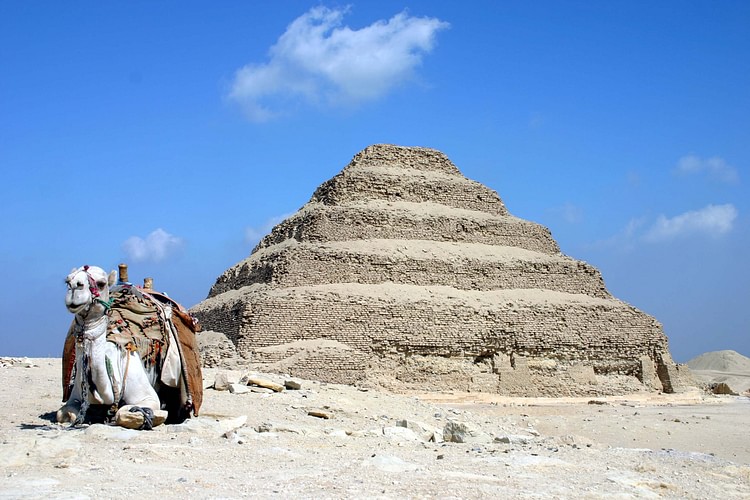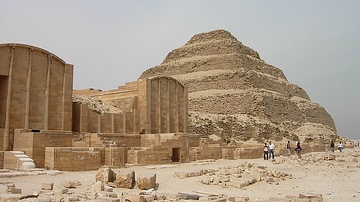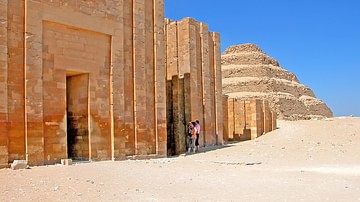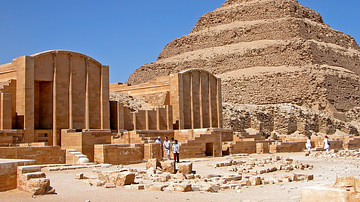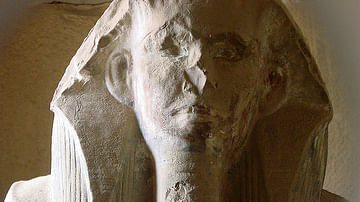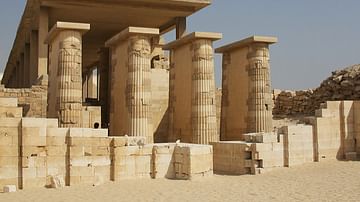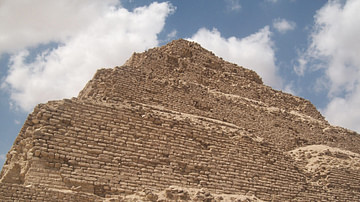Illustration
The Pyramid of Djoser (Zoser), or step pyramid (kbhw-ntrw in Egyptian) is an archeological remain in the Saqqara necropolis, Egypt, northwest of the city of Memphis. It was built for the burial of Pharaoh Djoser by his vizier Imhotep, during the 27th century BCE. It is the central feature of a vast mortuary complex in an enormous courtyard surrounded by ceremonial structures and decoration.
This first Egyptian pyramid consisted of six mastabas (of decreasing size) built atop one another in what were clearly revisions and developments of the original plan. The pyramid originally stood 62 metres (203 ft) tall, with a base of 109 × 125 m (358 × 410 ft), and was clad in polished white limestone. The step pyramid (or proto-pyramid) is considered to be the earliest large-scale cut stone construction, although the nearby enclosure known as Gisr el-mudir would seem to predate the complex. The oldest known uncut stone pyramid structure dates to 3000 BCE in the city of Caral, Peru.
Cite This Work
APA Style
Charlesjsharp, . (2012, April 26). Step Pyramid of Saqqara. World History Encyclopedia. Retrieved from https://www.worldhistory.org/image/539/step-pyramid-of-saqqara/
Chicago Style
Charlesjsharp, . "Step Pyramid of Saqqara." World History Encyclopedia. Last modified April 26, 2012. https://www.worldhistory.org/image/539/step-pyramid-of-saqqara/.
MLA Style
Charlesjsharp, . "Step Pyramid of Saqqara." World History Encyclopedia. World History Encyclopedia, 26 Apr 2012. Web. 19 Apr 2024.
